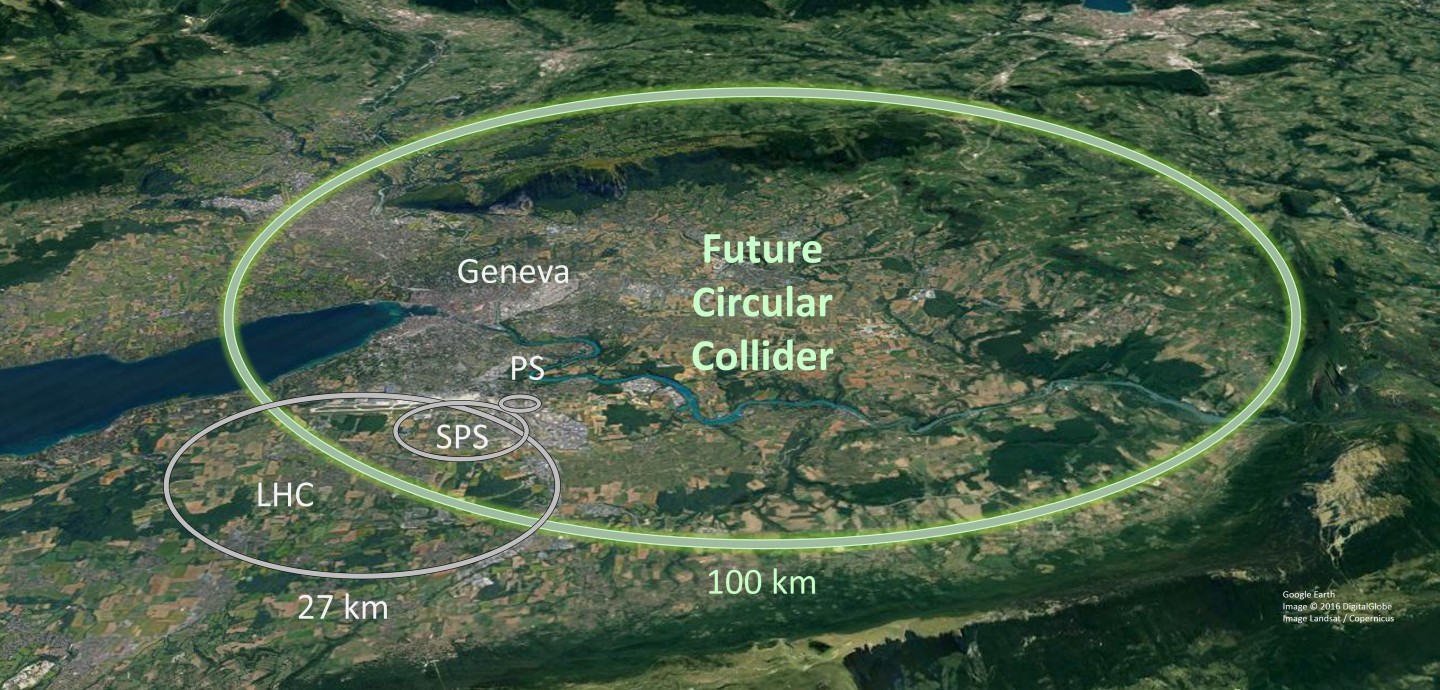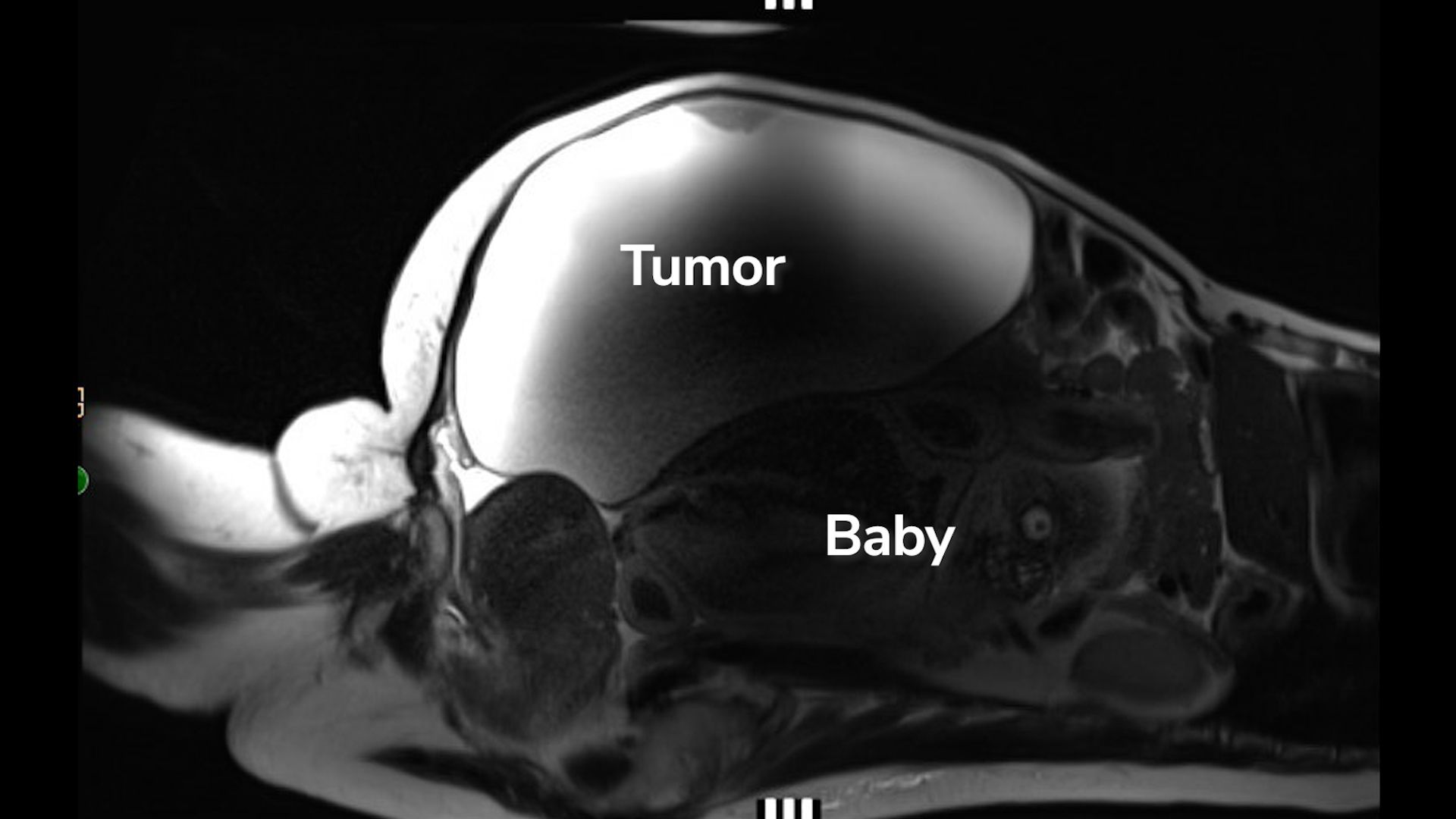Physicists Want to Build an Even More Powerful Atom Smasher at CERN

The universe is filled with particles we don't know about that are governed by rules we don't yet understand.
But by smashing familiar particles together at nearly the speed of light using large machines aptly named particle accelerators, physicists can sometimes glimpse the invisible.
Now, they have a plan to develop one of the most powerful particle accelerators to date that will be nearly four times the size of the current record holder: a 17-mile-long (27 kilometers) ring called the Large Hadron Collider (LHC) at CERN in Switzerland. [Photos - Behind the Scenes at the Largest U.S. Atom Smasher]
The Large Hadron Collider, perhaps best known for the discovery of the elusive Higgs boson, which explains how other particles get their mass, has so far failed to find particles that go beyond the Standard Model — the currently accepted particle-physics guide for how the forces and particles in the universe interact.
All that would be fine, albeit not so exciting, if the Standard Model could explain the universe and its inner workings. But the model falls short — for example, it doesn't account for dark matter, an invisible force that exerts a gravitational pull, that physicists think — but don't know for sure — exists.
The hope is that a bigger, more powerful machine might be able to provide clues as to what this dark matter is made of and why the universe is made up of more matter than its weird cousin antimatter (even though it should have started with equal amounts). The new accelerator, which would be named the Future Circular Collider (FCC), would be 50 to 62 miles (80 to 100 km) long, meaning it would provide more distance over which particles can speed up and gain energy, according to a conceptual design report released today (Jan. 16) and crafted by 1,300 researchers from over 150 universities.
The FCC will be built in steps: The first machine of the FCC would collide electrons and positrons (positively charged particles). The second would smash protons into other protons, according to a statement released by CERN.
Get the world’s most fascinating discoveries delivered straight to your inbox.
Physicists are hopeful that such a machine — with 10 times the strength of the LHC — can help them understand how Higgs particles interact with one another. It might also reveal previously undetected particles; and by colliding heavy ions, the experiment might reveal glimpses of what matter was like in the early universe, according to the statement.
Some researchers are excited, while others don't think that this future collider will reveal anything new — and would still fall way short of the strength it would need to actually detect the particles that physicists hope it would. And still others think physicists and other scientists should focus more, in terms of funding, on other imminent issues, such as climate change, according to the BBC and Gizmodo.
If such a project is accepted and attempted, it will take about 20 years to design, construct and test the machine, and would cost about 24 billion euros (over $27 billion dollars) for the two machines and tunnel, according to the statement.
But first, an international panel of particle physicists working on a new European strategy for particle physics will consider it along with some other submissions.
Editor's Note: This story was updated to correct the amount that this project would cost. It would cost $27 billion dollars, not $27 million.
- Beyond Higgs: 5 Elusive Particles That May Lurk in the Universe
- Wacky Physics: The Coolest Little Particles in Nature
- The 9 Biggest Unsolved Mysteries in Physics
Originally published on Live Science.

Yasemin is a staff writer at Live Science, covering health, neuroscience and biology. Her work has appeared in Scientific American, Science and the San Jose Mercury News. She has a bachelor's degree in biomedical engineering from the University of Connecticut and a graduate certificate in science communication from the University of California, Santa Cruz.


